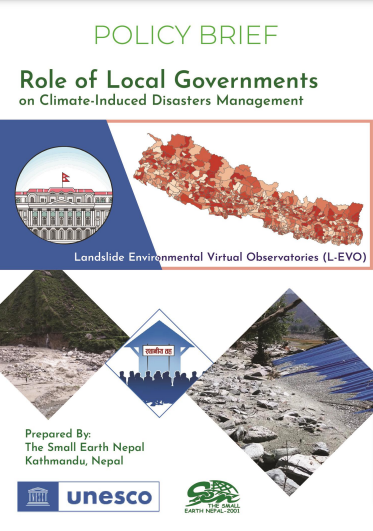Executive Summary
The Himalayas are highly susceptible to the impacts of climate change and disasters and it is increasing the vulnerability of communities and their livelihoods. Western Nepal is identified as one of the most vulnerable regions in Nepal, with both due to increasing occurrences of climate induced disasters, most of which are characterized both by severity and impact. The management of such disasters is crucial and the roles of disaster risk management are shared among multiple stakeholders, including governments (of all levels), organizations, and communities. This study/analysis has been done as a part of the Landslide Environmental Virtual Observatories (L-EVO) project which is built on the Hyogo Framework for Action and Sendai Framework for Action for Disaster Risk Reduction for undertaking strategic actions to improve disaster risk governance and increase the involvement of the local communities and government. This policy brief synthesizes the findings from the project and offers actionable recommendations to strengthen the capacity of local government and enhance resilience at the local level.

